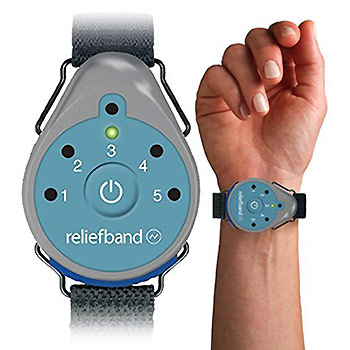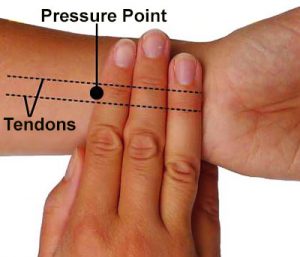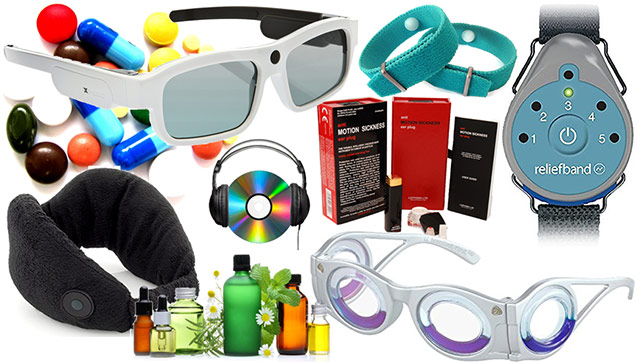How to prevent and treat motion- or seasickness – The most comprehensive guide.
Anyone who’s ever been sick to their stomach on a boat or plane knows the discomfort of motion- or seasickness. And those who have experienced motion or seasickness can identify with the old saying: when you first get motion sickness, you fear you’ll die. And then, as it continues, you fear you won’t die!
Motion sickness, which is often considered a mere inconvenience today, had far graver consequences in times past. Caesar recorded how rough seas swept away some of his soldiers, leaving them too weak to battle and thus leading to their demise. During Napoleon’s campaign in Egypt, using camels as transportation resulted in some soldiers becoming so ill from the animals’ swaying movement that they could not engage in combat. Throughout history, seasickness has claimed the lives of immigrants travelling to the Americas, who perished from dehydration, and infants whose mothers, suffering from the malady, were unable to nurse them.
But what exactly is motion sickness?
Seasickness or motion sickness is a condition that can occur when the body experiences conflict between what it senses from the inner ear and what it sees with the eyes. It is characterized by symptoms such as dizziness, nausea, and vomiting. Seasickness or motion sickness is a generic term for the discomfort and associated vomiting induced by various motion conditions aboard ships, aircraft, vehicles or zero-gravity environments.
Seasickness caused by yacht motion can pose a severe problem for sailors. The affected person feels miserable and becomes incapacitated, therefore a liability for others on a shorthanded boat. Repeated vomiting may also lead to dehydration. About ninety per cent of people who travel at sea or in the air will experience seasickness or motion sickness. It is, therefore, essential to know how to prevent seasickness.
Despite decades of research, scientists and even NASA are still in the dark about the causes of motion sickness. Current wisdom believes that sensory conflict is to blame. It occurs when your brain receives conflicting information from your body, eyes, and inner ear (which tells your brain how your head is moving). For example, if you’re on a yacht, your inner ear may detect a rolling motion that your eyes can’t see. Simply put, a sensory mismatch causes it, and the brain gets confused by too many unexpected inputs.
What are the symptoms of motion sickness?
Incessant yawning may be the first sign of motion sickness. Nausea and vomiting are common symptoms of motion sickness, but they may also cause cold sweats, headaches, and pain.
Who’s at Risk?
History shows references to seasickness date as far back as Ancient Greece. According to research, nearly all life raft occupants will vomit in rough seas, and sixty per cent of student aircrew members will suffer from air sickness during their training.
Women are more sensitive to motion than men and are forty per cent more likely to experience seasickness. Evidence suggests that, given the appropriate provocative conditions, almost all healthy individuals can develop seasickness. Indeed, as many as ninety per cent of seafarers have suffered at least once, if not several times, from seasickness.
Some people are a little more likely to get it than others:
- Women, especially when they’re menstruating, pregnant, or on hormone therapy
- People who suffer from migraines
- Children aged 2 – 12
- People who take certain kinds of medications such as antibiotics, narcotics, asthma medicines and antidepressants.
The latest trends and treatments to help with motion sickness or seasickness include:
- Wearable Devices: Wearable devices, such as glasses, VR headsets, wristbands and patches are used to alleviate motion sickness.
- Anti-motion Sickness Medications: Over-the-counter and prescription drugs, such as Dramamine, meclizine, and scopolamine, can be effective in preventing or reducing symptoms of motion sickness.
- Natural and Herbal Remedies: Some essential oils, such as ginger, peppermint, and lavender, are believed to help relieve symptoms of motion sickness when used in aromatherapy.
Remedies for seasickness
Even with medical research studies and hundreds of years of experimentation, no single method or medication works for everyone. But various methods work for different people, so tackling the problem and determining what works best for you is primarily an issue. It would be best to begin the remedy well in advance in most cases – before getting on the yacht.
Herewith is a list of the latest technologies, medications and aids to stop and prevent seasickness:
Wearable Devices
See-LEVEL Virtual Reality Headset (Latest Technology)
See-LEVEL, designed and patented in New Zealand, harnesses the power of virtual reality (VR) to alleviate the symptoms of seasickness. By creating a stable and predictable virtual environment, See-LEVEL provides a novel and effective solution to this widespread problem. It transmits real-time data to a VR headset, simulating a stable horizon and eliminating discrepancies between a person’s inner ear and their eyes. As a result, the brain receives a stable visual reference and can process motion information effectively, reducing or eliminating the symptoms of seasickness.
One of the key benefits of See-LEVEL is its ease of use with no side effects or medication involved. Simply put on the VR headset and you’re good to go! And because See-LEVEL is compact and lightweight, it’s easy to bring on any yacht or boating trip, making it an ideal solution for yacht professionals and seafarers alike. More info.

Boarding Glasses (Seetroën)
With a claimed success rate of up to 95% in initial tests, these motion sickness glasses feature four circular rims, two in front and one ring on each side, filled with bright liquid in either blue or red. As your vehicle moves, the liquid in the rims moves, creating an artificial horizon in your field of vision. This balances the information received by your brain and eliminates sensory mismatch, reducing the stress response and symptoms of motion sickness. These glasses have received recognition in the form of a DAME design award in 2013, the most prestigious international design competition for marine equipment and accessories. With their unique design, the blue liquid inside the ringed frame follows the movement of your body, providing the missing ‘movement’ information to your brain and avoiding sickness. This movement is recorded by your peripheral vision and does not impede central ‘voluntary’ vision.
Boarding Ring Glasses can be worn like regular glasses, even over ophthalmic and sunglasses, and are suitable for adults and children with no side effects. They can be used as needed, and there’s no need to take any medicine at the same time. The instructions are simple:
- Put them on when feeling queasy.
- Take them off when feeling better.
- Repeat as needed.
Similar designs by other manufacturers may be found online. Visit the Boarding Ring or the Citroën website or order from Amazon.

Reliefband
Relief Band utilizes the principle of neuromodulation, a cutting-edge technology that blocks the waves of nausea coming from the stomach by controlling the neural pathways between the brain and the stomach. The technology sends signals to the user’s central nervous system, directly impacting the part of the brain responsible for the feeling of nausea.
The Relief Band is easy to use and can be worn on the Nei-Kuan P6 point (located between the two tendons on your wrist), two finger lengths from the first crease in your wrist. Simply fasten the Relief Band with its strap and adjust the electric signals to a comfortable level by pressing the button. The Relief Band is designed to provide instant relief from motion sickness and its associated symptoms. Unlike motion sickness pills or patches, Relief Band has no adverse side effects like drowsiness or cognitive impairment. Additionally, the band is compact and can be easily worn on the wrist, making it a convenient solution for motion sickness. In conclusion, Relief Band is a clinically proven solution for motion sickness, morning sickness, and VR gaming.
Visit the Reliefband website or order from Amazon.

Nevasic
Nevasic uses sound therapy to combat motion sickness. The technology works by playing specific sounds that stimulate the brain, helping to balance and regulate the vestibular system and relieve symptoms of motion sickness. This unique specialist audio programme contains specific tones, frequencies and pulses concealed by an over-layer of music that can relieve or dispel the symptoms of nausea and vomiting. Many of the frequencies and pulses desensitise the Vestibular system and border our recognisable audio spectrum but still profoundly affect the ear. The technology is non-invasive and has no adverse side effects like drowsiness or cognitive impairment. Additionally, Nevasic can be easily used on the go through its mobile app, making it a convenient solution for motion sickness. In conclusion, Nevasic is a revolutionary solution for motion sickness, morning sickness, and VR gaming.
Ear Plugs
Using an airtight fit earplug in the non-dominant ear (left ear for a right-handed person, right ear for a left-handed person) can help alleviate motion sickness in some cases. Some reports say the ear that is used is not critical. By reducing external noise and reducing stimulation to the inner ear, earplugs can help reduce dizziness and disorientation, which are common symptoms of motion sickness. However, it is essential to note that earplugs are not a cure for motion sickness and that other remedies may be more effective in combating the symptoms.
Wrist Bands
Anti-Seasickness wrist bands come in two varieties; acupressure and magnetic. They work by applying pressure to a point on your wrist known as the Nei-Kuan (P6) acupressure point. From your wrist crease on the palm side of your arm, measure three finger widths or two thumb widths up your arm, between the two tendons – that is the pressure point.

The stud on the wristband must be positioned facing downwards over the P6 point. If you feel the bands are not working for you, try adjusting them slightly to see if this gives relief. Except for BioBands, you should use both wrist bands simultaneously – one on each wrist. If you start to feel queasy while wearing the bands, then gently press down on the stud to increase the pressure. If you do not have a wrist band, use your thumb to press down on the pressure point and hold for a few minutes until the symptoms subside. Although acupressure bands don’t cause any side effects, there’s little scientific evidence that they effectively treat motion sickness. There is no evidence magnetic devices marketed for motion sickness relief do any good. Some experienced seafarers say acupressure bands are the sailor’s equivalent of lucky heather or hare’s feet charms.

Medications
Scopolamine Transdermal Patch (Hyoscine)
Scopolamine Transdermal Patch, also known as Hyoscine, is a prescription medication that is used to treat motion sickness. The patch is applied to the skin behind the ear and delivers a small, continuous dose of scopolamine over a period of 72 hours. The medication works by blocking the nerve signals that cause motion sickness, helping to prevent the symptoms of dizziness, nausea, and vomiting. Unlike traditional motion sickness remedies, such as ginger or anti-motion sickness pills, the patch does not need to be taken regularly, making it a convenient solution for travellers. Because it is a slow-release patch, apply the patch at least four hours before travel. It has a long-lasting effect for up to three days. Side effects may include blurred vision, disorientation and anxiety. Test this product at home before travelling to find out if the product will affect you negatively.
Dramamine (Dimenhydrinate or Gravol)
Dramamine is an over-the-counter antihistamine used to prevent and treat the symptoms of motion sickness, such as dizziness, nausea, and vomiting. The active ingredient in Dramamine, dimenhydrinate, works by reducing the conflicting signals that are sent to the brain from the inner ear and eyes, which can cause motion sickness. Dramamine blocks the effects of a neurotransmitter on the inner ear, which helps maintain your sense of balance and position. Dramamine is readily available without a prescription, making it a convenient and accessible solution for motion sickness sufferers. Side effects may include drowsiness.
Meclizine Hydrochloride
Meclizine HCL is marginally more potent than regular Dramamine. Meclizine is an antihistamine used to prevent and treat nausea, vomiting, and dizziness caused by motion sickness. Common side effects of Meclizine Hydrochloride include drowsiness and dry mouth symptoms.
Bonine (Meclizine)
Bonine or Meclizine is an antihistamine used to prevent and treat nausea and dizziness caused by motion sickness. In comparison to Dramamine, Bonine promotes its “less drowsy” formulas, primarily due to its once-daily dosing compared to the required every 4-6 hours dosing of Dramamine. To prevent motion sickness, take the first dose one hour before travelling. Common side effects of Bonine may include drowsiness.
Stugeron (Cinnarizine)
Stugeron or Cinnarizine is a dual-acting antihistamine and calcium channel blocker that effectively combats nausea and vomiting. It targets histamine in the brain to alleviate symptoms of travel sickness while also improving blood flow in the inner ear to reduce dizziness and sickness caused by vertigo, tinnitus, and Ménière’s disease. It also comes mixed with dimenhydrinate (another antihistamine) to treat vertigo. To ensure the best results in preventing travel sickness, take Cinnarizine 2 hours before your trip. Side effects may include drowsiness, sweating, and dry mouth.
Natural and Herbal remedies
- Ginger
Ginger has been shown to help relieve nausea and vomiting, making it an effective remedy for mild motion sickness cases. It is available in “natural” anti-nausea supplements available from any pharmacy. The ginger must be natural in a drink or food, not artificial ginger flavouring. Consult your doctor before taking ginger if you are on anticoagulant medication (blood thinners) or suffer from a heart condition. - Motioneaze
Motioneaze is a unique blend of potent herbal oils. The carefully selected ingredients work harmoniously to ease the inner ear’s sense of imbalance, effectively banishing nausea and other unpleasant symptoms. Apply a small amount behind each earlobe for quick absorption through the skin. In as little as 5 minutes, you’ll be back to feeling like your happy, balanced self with this all-natural remedy. It’s also safe for children and pregnant women. Visit the Motioneaze website for more information. - Aromatherapy
Fill a fine mist sprayer with distilled water, lemon oil, cedarwood oil, dill oil, lavender oil, and a few drops of spearmint and spray it lightly on your face. - Peppermint
Peppermint has been used for centuries as a remedy for digestive problems, including motion sickness. It has been shown to reduce nausea and calm the stomach. - Lemon
The scent of lemon has been shown to help reduce symptoms of motion sickness. You can inhale lemon essential oil or suck on lemon candies to get relief. - Vitamin B6
Vitamin B6, also known as pyridoxine, has been shown to help reduce symptoms of motion sickness. It is found in foods such as fish, meat, and vegetables.
How to prevent seasickness
Preventive measures for motion sickness or seasickness include:
- Stay close to the middle of the vessel. The middle has less motion than the bow and stern.
- Look at the horizon. The stationary horizon will always appear still and in the same place. Your brain will recognise the stillness, and your inner ear then regain balance, and the seasick feeling subsides.
- Eat light meals and carbohydrates, and avoid heavy, fatty, or spicy foods.
- Refrain from alcoholic or caffeinated drinks and substitute them with water. Adding lemon to your water may also help to alleviate symptoms.
- Avoid thinking about feeling seasick and stay active.
- If you are on a boat or a yacht with a swimming pool, you can reduce the water’s motion by submerging yourself in it!
- Avoid other seasick people. A surefire way to get seasick is to watch other people getting sick.
- Ensure your ears are clean. Wax build-up in your ear has been reported to lead to motion sickness.
- Open windows to allow fresh air or move to the top deck. Stay out of the heat.
- Stuffed and runny noses play havoc on the inner ear. Clear the nasal passages with a nasal decongestant.
- Sleep deprivation magnifies motion sickness because (according to US Navy research) it interferes with the vestibular system habituation process in the ears.
- Monitor your breathing – hyperventilation can lead to the lightness of the head and induce many of the symptoms of seasickness. Take deep, controlled breaths and stay calm to prevent hyperventilating. Breathing into a paper bag may help if you still can’t stop.
- Avoid books and computer screens. Otherwise, read small passages at a time with frequent breaks to look up towards the horizon.
- Keeping the head still and avoiding rapid head movements
- Sail using a yacht with stabilisers – click for more info.
It is important to note that what works for one person may not work for another, so it’s best to try different remedies and see what works best for you. It’s also advisable to consult a doctor before trying new products or remedies, especially if you have any underlying health conditions. Contact Royalty Yachts for a charter yacht with stabilizers to ensure a smooth, comfortable sail.


